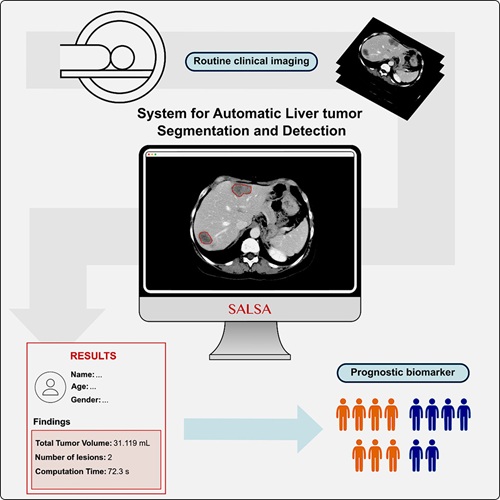Clinical Software Effectively Categorizes Benign and Malignant Spots on Smokers’ Lung Scans
|
By MedImaging International staff writers Posted on 17 Sep 2013 |
A study has developed a new clinical risk calculator software that effectively classifies, nine out of 10 times, which spots (lesions[nodules]) are benign and cancerous on an initial lung computed tomography (CT) scan among individuals at high risk for lung cancer.
The findings are expected to have immediate clinical bearing worldwide among health professionals who currently diagnose and treat individuals at risk for or who are diagnosed with lung cancer, and provide new evidence for developing and improving lung-cancer screening programs. A total of 12,029 lung cancer nodules seen on CT scans of 2,961 current and former smokers were studied in the population-based study.
The investigators, from the Terry Fox Research Institute (TFRI; Vancouver, BC, Canada), and other Canadian institutions, published their study’s findings in the September 5, 2013, issue of the New England Journal of Medicine (NEJM), and will have an instant impact on clinical practice, according to co-lead investigator Dr. Stephen Lam, chair of BC’s Provincial Lung Tumor Group at the BC Cancer Agency and a professor of medicine at the University of British Columbia (Vancouver, BC, Canada).
“We already know that CT screening saves lives. Now, we have evidence that our model and risk calculator can accurately predict which abnormalities that show up on a first CT require further follow-up, such as a repeat CT scan, a biopsy, or surgery, and which ones do not. This is extremely good news for everyone—from the people who are high risk for developing lung cancer to the radiologists, respirologists, and thoracic surgeons who detect and treat it. Currently, there are no Canadian guidelines for us to use in clinical practice.”
In countries where guidelines do exist, they largely relate to nodule size. The pan-Canadian investigators’ prediction model, developed by Brock University (St. Catharines, ON, Canada) epidemiologist Dr. Martin Tammemägi, includes a risk calculator that takes into account several factors in addition to size: older age, female sex, family history of lung cancer, emphysema, nodule location in the upper lobe, part-solid nodule type, lower nodule count and spiculation. “Reducing the number of needless tests and increasing rapid, intensive diagnostic workups in individuals with high-risk nodules are major goals of the model,” said Dr. Tammemägi.
The TFRI team used two sets of data to determine their findings, studying 12,029 nodules from 2,961 individuals—current and former smokers, aged 50–75, who had undergone low-dose CT screening. One set involved participants in the TFRI Pan-Canadian Early Detection of Lung Cancer Study from 2008 to 2010, where 1,871 individuals with a total of 7,008 nodules (102 of which were malignant) were screened and tracked. The other set involved 1,090 persons with 5,021 nodules (of which 42 were malignant) who took part in several lung cancer prevention trials conducted by the BC Cancer Agency during 2000-2010 and were funded through the US National Cancer Institute (NCI; Bethesda, MD, USA). In the former study, participants were followed for an average of three years; in the latter, for an average of eight-and-a-half years.
Dr. Lam noted that the prediction model holds up even in cases where clinicians are faced with the roughest challenges; for example, deciding what to do when nodules are one centimeter (the approximate width of an adult thumbnail) or smaller. Whereas nodule size is one predictor of lung cancer, the largest nodule appearing on the CT was not necessarily cancerous. The pan-Canadian study researchers discovered that nodules located in the upper lobes of the lung carry an increased possibility of cancer. In both data sets studied, researchers found that where cancer was present, fewer nodules were found. This model will simplify the work involved, particularly for radiologists, in evaluating and assessing nodules on scans, as well as respirologists and thoracic surgeons who must make decisions about tests and treatment for their patients.
“An accurate and practical model that can predict the probability that a lung nodule is malignant and that can be used to guide clinical decision making will reduce costs and the risk of morbidity and mortality in screening programs,” wrote Dr. Lam and study colleagues in the article.
“The findings in this study bolster the potential for the successful implementation of a lung cancer screening program using low-dose computed tomography [CT] within a high-risk population. This tool, combined with CT-screening, will increase our success in earlier detection, diagnosis and treatment of the disease. Further, this model combined with new guidelines for best clinical practice, will provide our health care system with both effective and affordable tools to implement such a program,” said thoracic surgeon Dr. Michael Johnston, a member of the study team from Nova Scotia (Canada). Dr. Johnston serves on the executive of the Terry Fox Research Institute and is chair of the medical advisory committee of Lung Cancer Canada.
“Many jurisdictions throughout the world are now considering whether or how to best implement lung cancer screening. Studies like this one are key to answering important questions so decisions are most likely to result in good practice and planning, and ultimately benefit patients,” said Dr. Heather Bryant, vice-president, cancer control at the Canadian Partnership Against Cancer.
The significant findings come on the heels of the US National Lung Screening Trial (2011) that found a 20% reduction in lung cancer mortality with the use of low-dose thoracic CT.
Dr. Christine Berg, co-principal investigator of the US National Lung Screening Trial and former chief, Early Detection Research Group, division of cancer prevention, for the National Cancer Institute in the United States, said, “This important work of Dr. Lam and colleagues is a major advance for clinicians performing lung cancer screening. They provide a tool to grapple with the problem of the high rate of positive low-dose CT scans. Fewer follow-up scans with their attendant cost and fewer biopsies with their complications will need to be performed while continuing to diagnosis lung cancer at an early stage to lower mortality. Coupled with continued public health efforts to lower cigarette smoking, this work will have international impact on the leading cause of cancer death worldwide.”
Related Links:
Terry Fox Research Institute
Brock University
University of British Columbia
The findings are expected to have immediate clinical bearing worldwide among health professionals who currently diagnose and treat individuals at risk for or who are diagnosed with lung cancer, and provide new evidence for developing and improving lung-cancer screening programs. A total of 12,029 lung cancer nodules seen on CT scans of 2,961 current and former smokers were studied in the population-based study.
The investigators, from the Terry Fox Research Institute (TFRI; Vancouver, BC, Canada), and other Canadian institutions, published their study’s findings in the September 5, 2013, issue of the New England Journal of Medicine (NEJM), and will have an instant impact on clinical practice, according to co-lead investigator Dr. Stephen Lam, chair of BC’s Provincial Lung Tumor Group at the BC Cancer Agency and a professor of medicine at the University of British Columbia (Vancouver, BC, Canada).
“We already know that CT screening saves lives. Now, we have evidence that our model and risk calculator can accurately predict which abnormalities that show up on a first CT require further follow-up, such as a repeat CT scan, a biopsy, or surgery, and which ones do not. This is extremely good news for everyone—from the people who are high risk for developing lung cancer to the radiologists, respirologists, and thoracic surgeons who detect and treat it. Currently, there are no Canadian guidelines for us to use in clinical practice.”
In countries where guidelines do exist, they largely relate to nodule size. The pan-Canadian investigators’ prediction model, developed by Brock University (St. Catharines, ON, Canada) epidemiologist Dr. Martin Tammemägi, includes a risk calculator that takes into account several factors in addition to size: older age, female sex, family history of lung cancer, emphysema, nodule location in the upper lobe, part-solid nodule type, lower nodule count and spiculation. “Reducing the number of needless tests and increasing rapid, intensive diagnostic workups in individuals with high-risk nodules are major goals of the model,” said Dr. Tammemägi.
The TFRI team used two sets of data to determine their findings, studying 12,029 nodules from 2,961 individuals—current and former smokers, aged 50–75, who had undergone low-dose CT screening. One set involved participants in the TFRI Pan-Canadian Early Detection of Lung Cancer Study from 2008 to 2010, where 1,871 individuals with a total of 7,008 nodules (102 of which were malignant) were screened and tracked. The other set involved 1,090 persons with 5,021 nodules (of which 42 were malignant) who took part in several lung cancer prevention trials conducted by the BC Cancer Agency during 2000-2010 and were funded through the US National Cancer Institute (NCI; Bethesda, MD, USA). In the former study, participants were followed for an average of three years; in the latter, for an average of eight-and-a-half years.
Dr. Lam noted that the prediction model holds up even in cases where clinicians are faced with the roughest challenges; for example, deciding what to do when nodules are one centimeter (the approximate width of an adult thumbnail) or smaller. Whereas nodule size is one predictor of lung cancer, the largest nodule appearing on the CT was not necessarily cancerous. The pan-Canadian study researchers discovered that nodules located in the upper lobes of the lung carry an increased possibility of cancer. In both data sets studied, researchers found that where cancer was present, fewer nodules were found. This model will simplify the work involved, particularly for radiologists, in evaluating and assessing nodules on scans, as well as respirologists and thoracic surgeons who must make decisions about tests and treatment for their patients.
“An accurate and practical model that can predict the probability that a lung nodule is malignant and that can be used to guide clinical decision making will reduce costs and the risk of morbidity and mortality in screening programs,” wrote Dr. Lam and study colleagues in the article.
“The findings in this study bolster the potential for the successful implementation of a lung cancer screening program using low-dose computed tomography [CT] within a high-risk population. This tool, combined with CT-screening, will increase our success in earlier detection, diagnosis and treatment of the disease. Further, this model combined with new guidelines for best clinical practice, will provide our health care system with both effective and affordable tools to implement such a program,” said thoracic surgeon Dr. Michael Johnston, a member of the study team from Nova Scotia (Canada). Dr. Johnston serves on the executive of the Terry Fox Research Institute and is chair of the medical advisory committee of Lung Cancer Canada.
“Many jurisdictions throughout the world are now considering whether or how to best implement lung cancer screening. Studies like this one are key to answering important questions so decisions are most likely to result in good practice and planning, and ultimately benefit patients,” said Dr. Heather Bryant, vice-president, cancer control at the Canadian Partnership Against Cancer.
The significant findings come on the heels of the US National Lung Screening Trial (2011) that found a 20% reduction in lung cancer mortality with the use of low-dose thoracic CT.
Dr. Christine Berg, co-principal investigator of the US National Lung Screening Trial and former chief, Early Detection Research Group, division of cancer prevention, for the National Cancer Institute in the United States, said, “This important work of Dr. Lam and colleagues is a major advance for clinicians performing lung cancer screening. They provide a tool to grapple with the problem of the high rate of positive low-dose CT scans. Fewer follow-up scans with their attendant cost and fewer biopsies with their complications will need to be performed while continuing to diagnosis lung cancer at an early stage to lower mortality. Coupled with continued public health efforts to lower cigarette smoking, this work will have international impact on the leading cause of cancer death worldwide.”
Related Links:
Terry Fox Research Institute
Brock University
University of British Columbia
Latest Imaging IT News
- New Google Cloud Medical Imaging Suite Makes Imaging Healthcare Data More Accessible
- Global AI in Medical Diagnostics Market to Be Driven by Demand for Image Recognition in Radiology
- AI-Based Mammography Triage Software Helps Dramatically Improve Interpretation Process
- Artificial Intelligence (AI) Program Accurately Predicts Lung Cancer Risk from CT Images
- Image Management Platform Streamlines Treatment Plans
- AI-Based Technology for Ultrasound Image Analysis Receives FDA Approval
- AI Technology for Detecting Breast Cancer Receives CE Mark Approval
- Digital Pathology Software Improves Workflow Efficiency
- Patient-Centric Portal Facilitates Direct Imaging Access
- New Workstation Supports Customer-Driven Imaging Workflow
Channels
Radiography
view channel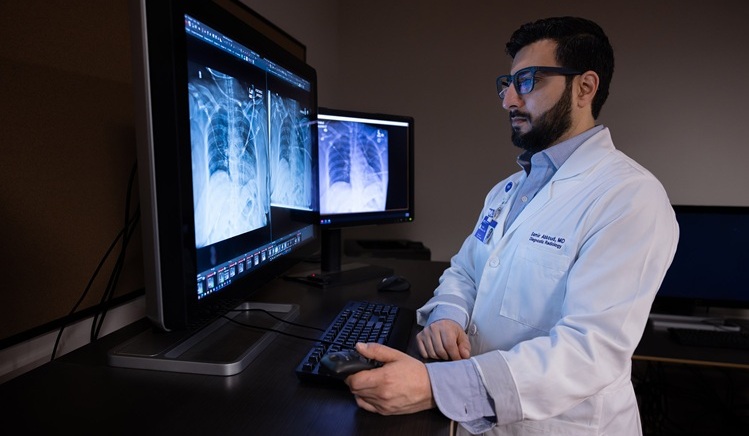
AI Radiology Tool Identifies Life-Threatening Conditions in Milliseconds
Radiology is emerging as one of healthcare’s most pressing bottlenecks. By 2033, the U.S. could face a shortage of up to 42,000 radiologists, even as imaging volumes grow by 5% annually.... Read more
Machine Learning Algorithm Identifies Cardiovascular Risk from Routine Bone Density Scans
A new study published in the Journal of Bone and Mineral Research reveals that an automated machine learning program can predict the risk of cardiovascular events and falls or fractures by analyzing bone... Read more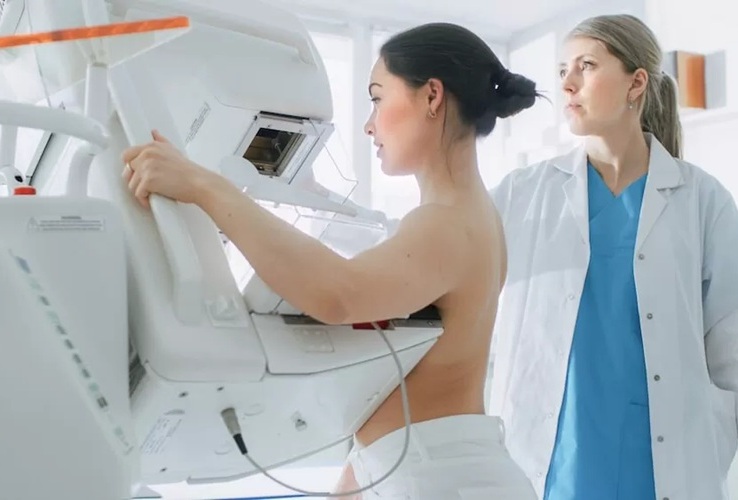
AI Improves Early Detection of Interval Breast Cancers
Interval breast cancers, which occur between routine screenings, are easier to treat when detected earlier. Early detection can reduce the need for aggressive treatments and improve the chances of better outcomes.... Read more
World's Largest Class Single Crystal Diamond Radiation Detector Opens New Possibilities for Diagnostic Imaging
Diamonds possess ideal physical properties for radiation detection, such as exceptional thermal and chemical stability along with a quick response time. Made of carbon with an atomic number of six, diamonds... Read moreMRI
view channel
New MRI Technique Reveals Hidden Heart Issues
Traditional exercise stress tests conducted within an MRI machine require patients to lie flat, a position that artificially improves heart function by increasing stroke volume due to gravity-driven blood... Read more
Shorter MRI Exam Effectively Detects Cancer in Dense Breasts
Women with extremely dense breasts face a higher risk of missed breast cancer diagnoses, as dense glandular and fibrous tissue can obscure tumors on mammograms. While breast MRI is recommended for supplemental... Read moreUltrasound
view channel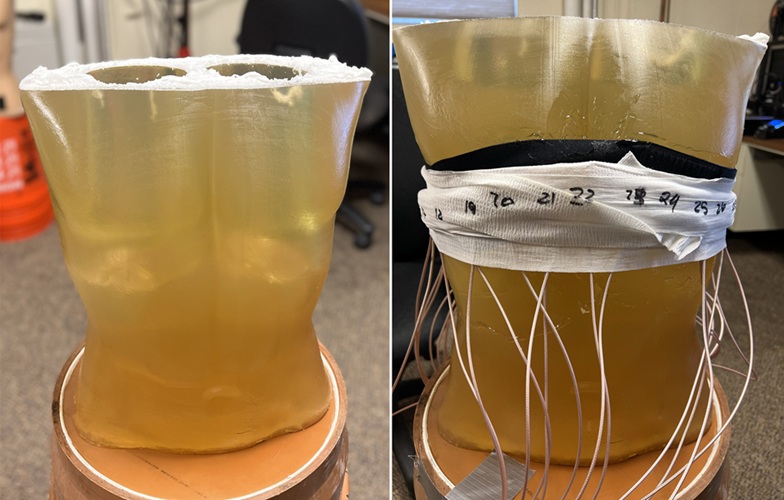
New Medical Ultrasound Imaging Technique Enables ICU Bedside Monitoring
Ultrasound computed tomography (USCT) presents a safer alternative to imaging techniques like X-ray computed tomography (commonly known as CT or “CAT” scans) because it does not produce ionizing radiation.... Read more
New Incision-Free Technique Halts Growth of Debilitating Brain Lesions
Cerebral cavernous malformations (CCMs), also known as cavernomas, are abnormal clusters of blood vessels that can grow in the brain, spinal cord, or other parts of the body. While most cases remain asymptomatic,... Read moreNuclear Medicine
view channel
New Imaging Approach Could Reduce Need for Biopsies to Monitor Prostate Cancer
Prostate cancer is the second leading cause of cancer-related death among men in the United States. However, the majority of older men diagnosed with prostate cancer have slow-growing, low-risk forms of... Read more
Novel Radiolabeled Antibody Improves Diagnosis and Treatment of Solid Tumors
Interleukin-13 receptor α-2 (IL13Rα2) is a cell surface receptor commonly found in solid tumors such as glioblastoma, melanoma, and breast cancer. It is minimally expressed in normal tissues, making it... Read moreGeneral/Advanced Imaging
view channel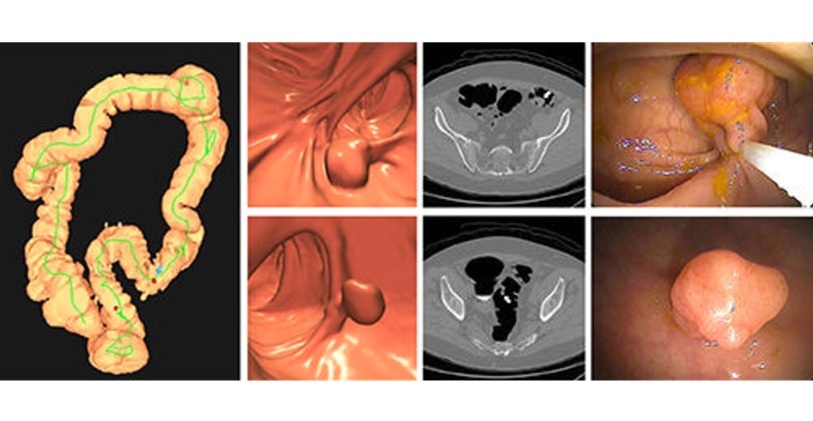
CT Colonography Beats Stool DNA Testing for Colon Cancer Screening
As colorectal cancer remains the second leading cause of cancer-related deaths worldwide, early detection through screening is vital to reduce advanced-stage treatments and associated costs.... Read more
First-Of-Its-Kind Wearable Device Offers Revolutionary Alternative to CT Scans
Currently, patients with conditions such as heart failure, pneumonia, or respiratory distress often require multiple imaging procedures that are intermittent, disruptive, and involve high levels of radiation.... Read more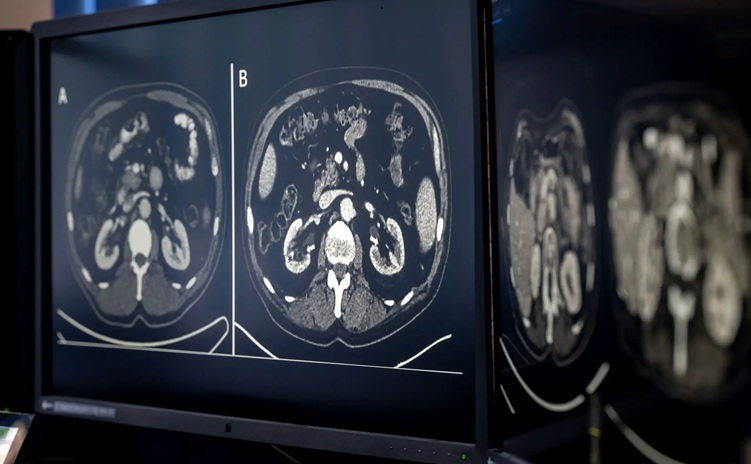
AI-Based CT Scan Analysis Predicts Early-Stage Kidney Damage Due to Cancer Treatments
Radioligand therapy, a form of targeted nuclear medicine, has recently gained attention for its potential in treating specific types of tumors. However, one of the potential side effects of this therapy... Read moreIndustry News
view channel
GE HealthCare and NVIDIA Collaboration to Reimagine Diagnostic Imaging
GE HealthCare (Chicago, IL, USA) has entered into a collaboration with NVIDIA (Santa Clara, CA, USA), expanding the existing relationship between the two companies to focus on pioneering innovation in... Read more
Patient-Specific 3D-Printed Phantoms Transform CT Imaging
New research has highlighted how anatomically precise, patient-specific 3D-printed phantoms are proving to be scalable, cost-effective, and efficient tools in the development of new CT scan algorithms... Read more
Siemens and Sectra Collaborate on Enhancing Radiology Workflows
Siemens Healthineers (Forchheim, Germany) and Sectra (Linköping, Sweden) have entered into a collaboration aimed at enhancing radiologists' diagnostic capabilities and, in turn, improving patient care... Read more












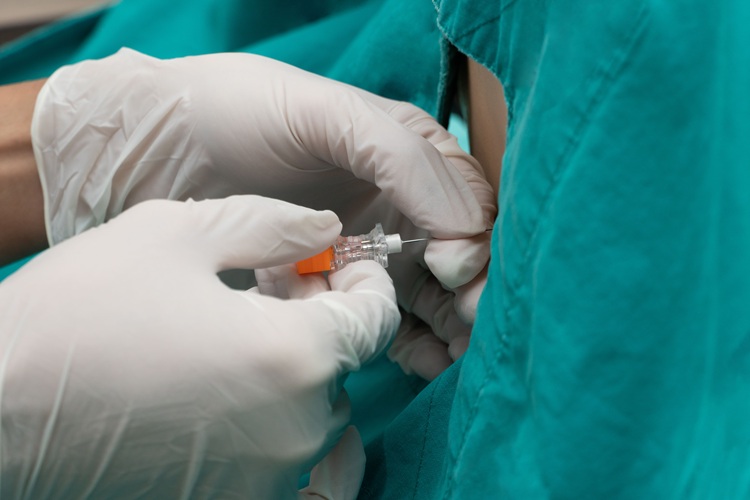

.jpeg)



